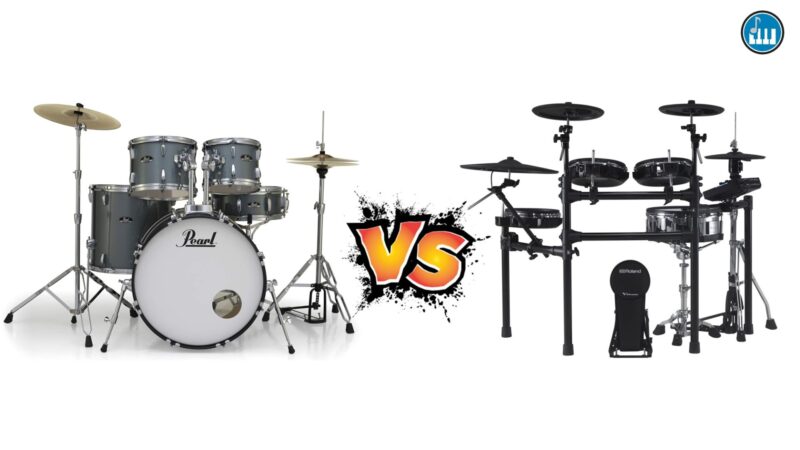Types of Drums – All the popular drums out there!

Different popular types of drums most used in contemporary music with their description and characteristics.
Table of Contents
Different types of drums in popular use
Drums are the oldest musical instrument. Throughout the centuries and cultures, drums have evolved and there are hundreds of different types of drums in modern times.
Drums are instruments in the percussion category. Each of the different types of drums have their own characteristics and uses, we’ll show you how they make sounds and why they work in their specific environments.
Main popular types of drums
- Acoustic drum kit
- Electronic drums
- Bass drums
- Snare drums
- Tenor drums
- Timpani
- Congas
- Bongos
- Tabla
- Djembe
- Hang
Acoustic drum kit

When mentioning the word drum, many people think of acoustic drum kits first. In fact, drum sets are the most popular type of drums in the Western world. Thus, there is usually a drummer in each band.
Most acoustic drum kits have standard setups. However, the sizes and number of drums will differ depending on the style of music the drummer is playing.
Thus, rock drum kits have the standard setup that most people are familiar with. A 20″ or 22″ bass drum along with 3 toms, 1 snare and between 4 and 6 cymbals. This type of setup is used for rock, as well as many other musical genres.
In contrast, acoustic jazz drum kits are usually quite small. A jazz drum bass drum is typically between 16″ and 20″ and has 2 timpani that will be tuned high for a resonant tone and 3 cymbals. Many jazz drummers will also use large cymbals throughout the kit. These small drum kits are called compact kits and are also used by drummers who want kits that are easy to transport.

The tuning of the drums depends on the preference of the drummer. Some drummers like deep, punchy tones, while others like high, resonant ones.
Finally, drum kits for progressive and metal music are often larger and have multiple toms and cymbals, creating a huge setup that has many sounds. Metal drummers play on kits like this because the style of music requires many different tones from the drums.
Electronic drums

Electronic drums are an electric instrument based on acoustic drums. Thus, electronic drums produce sounds from existing acoustic drums or other percussion instruments. This can be easily configured from the instrument’s computer. Electronic drum kits are a great alternative to acoustic drums when you don’t have space or require a quieter instrument. Thus, these kits are often used in the home as a quiet alternative to acoustic drum kits. Also, electronic drum kits are also a great solution to use in gigs without the need to mike the drums.
In addition, electronic drums come in different formats, as acoustic drums as in the photo above, and as electronic drum pads. These sample pads let you do a lot like play backing tracks, produce synth sounds, create samples, and play entire ensembles live.
Many drummers combine acoustic and electronic drum sets, this is called hybrid percussion. Hybrid percussion is very popular in modern music, especially in pop settings. Also, it is used for practical issues when there is no adequate sound system.
Bass drums
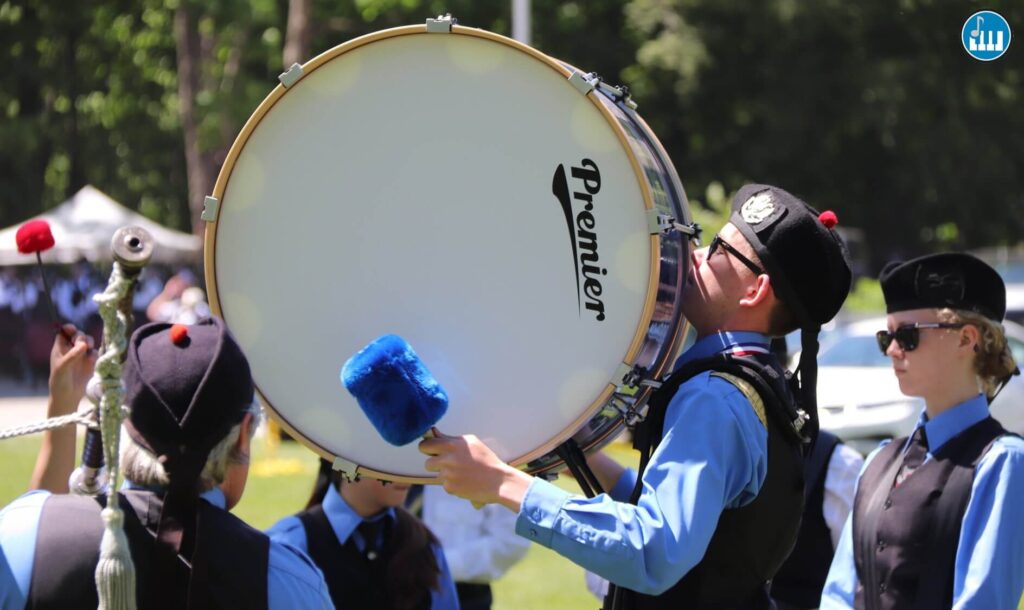
The fundamental base of an acoustic drum kit is the bass drum. This drum sets the pulse of the music. This drum has been around long before acoustic drum sets. The bass drum or similar drums were traditionally used to play orchestral and military music. In the latter, setting the pace of progress. Today you can also find them in percussion bands of popular and street music, and especially of African and American origin.
In orchestras, the bass drum is placed on its side for a percussionist to play. The bass drum player in a drum line has the drum strapped to his body. The bass drum player uses large mallets to play both sides of the bass drum.
Also, you might be interested in our review of the best headset microphones for singing drummers and percussionists.
Snare drums

Along with the bass drum, the fundamental foundation of an acoustic drum kit is the snare. The snare drum -along with the bass drum- are the most played and most important in a drum set. But the snare drum was around long before modern acoustic drums. This drum was traditionally used to play in military and orchestral music. Today the snare is widely used in all kinds of music. Also, you can find this type of drum in percussion bands of popular music, especially of African and American origin.
In orchestras, the snare is placed on a support played by a percussionist. The drum lines will have a different type of snare known as a marching snare. He is tied to a harness that the musician has. These marching snares are usually much tighter and louder than standard snares.
Tenor drums

The third type of drums are tenors. Generally, tenor drum setups have 4 to 6 drums of different sizes. Also used by drum lines. The drummer hangs them on his torso and marches with them. Tenor drums give varied tones. These drums are similar to the toms on an acoustic drum kit, but with a tighter, more aggressive sound.
A drum line will have multiple players in each section to get a great sound. Typically there will be three or more percussionists, one on bass drum, one on snare, and one on tenor drum.
Perhaps you might be interested in our selection of the best software and apps to make Beats online and for free.
Timpani
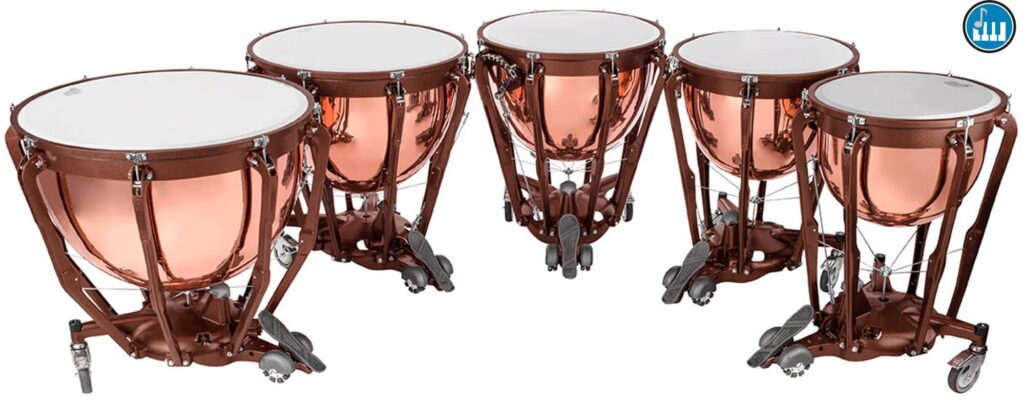
The timpani are present in most orchestras in the world. These types of huge drums are often used in groups of two or four. What sets timpani apart is that they produce melodic tones. So a timpani player has to tune the timpani to fit the key of the song they are playing. To tune the timpani, the player must press the pedals under the drums to tighten or loosen the skin of the drum. Thus, once the timpani are in tune, they produce a distinctive roaring bass tone.
Although tuning the timpani may seem like a complicated task, professional timpanists are able to do it very quickly. Timpanists even sometimes change tuning in the middle of a composition.
Congas or Tumbadoras
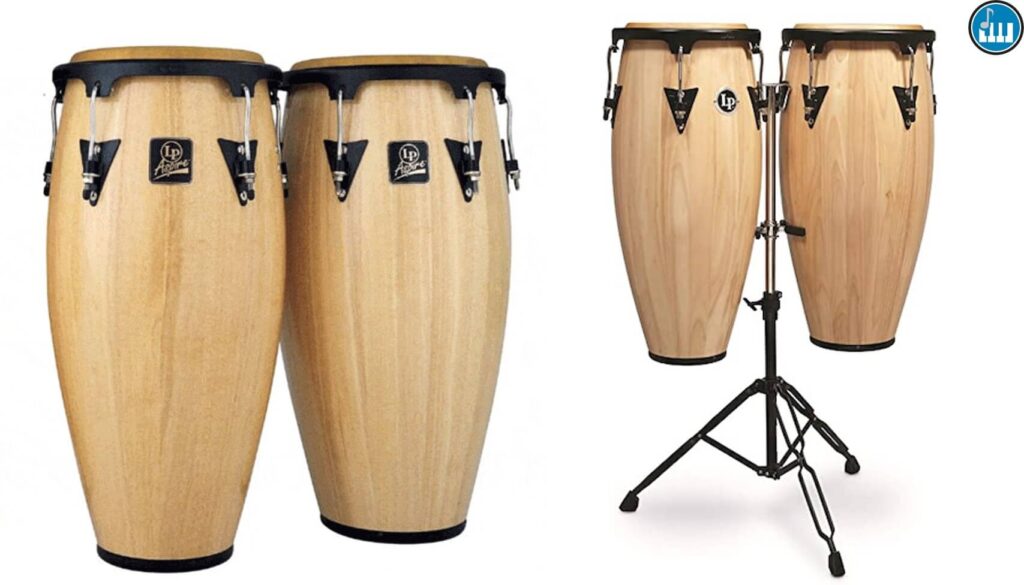
Originally from Cuba, the congas are incredibly popular percussion instruments. These tall drums are also known as tumbadoras and are used in many percussion setups and provide attack tones that are clearly heard in most music.
Congas are larger drums, tall above all. They often come in sets of two, but you can buy one at a time. Some drummers will use one conga while others will use several. They produce a bass tone that is deep and warm.
The congas, being quite high, are generally played by the percussionist standing up. Also, the congas can be held by supports which gives it greater height and stability.
Check out this guide on free online drum machines.
Bongos

Also, originally from Cuba, bongos are very popular percussion instruments thanks to their size and portability. These small drums are used in a variety of percussion setups and provide attack tones that are clear in most music.
Bongos are small drums and each set has two drums connected by a wooden bridge. The percussionist supports the bongos with his legs while he is seated, or he can also mount them on a stand to play while standing.
They produce a sharp attack tone and can produce a sound similar to a snare rim hit when you strike the rim of the bongos with your fingers.
As you would expect from their Cuban origin, the congas and bongos are generally used in conjunction.
Tabla

The tabla is a very popular pair of drums from India. The table is also used in India, Bangladesh, Afghanistan, Pakistan, Nepal, and Sri Lanka. One drum produces a bass tone and the other drum produces a tenor tone. These drums are used in many variations of Indian music. The sound is extremely recognizable and is often heard in conjunction with the various sounds of a sitar.
To play the tabla, you need to sit cross-legged and hit the drum skins with your fingers and palms. There are different techniques to use that will produce different sounds. In the previous video, he explains the technique for playing the tabla.
Also, we recommend that you visit our guide on the best DAWs to record music and audio on Windows PC, Mac and Linux.
Djembe

Djembe drums are of African origin. These drums are tuned with strings and covered with animal skin on the surface. Depending on the way you hit them, it gives very different sounds. So when you hit the center of the drum, you get a deep bass tone. Instead, when you hit the rim, you get an attack tone similar to a snare rim hit with more treble.
The djembes are placed between the legs to play and you can play them sitting or standing. Djembes are commonly used in drum circles. Also, the Djembes are used in traditional African music.
Today, some drum companies produce djembes that instead of strings, use the lugs you’d normally see on standard drum kits for tuning. Thus these drums are easy to tune with the use of a drum key.
Hang
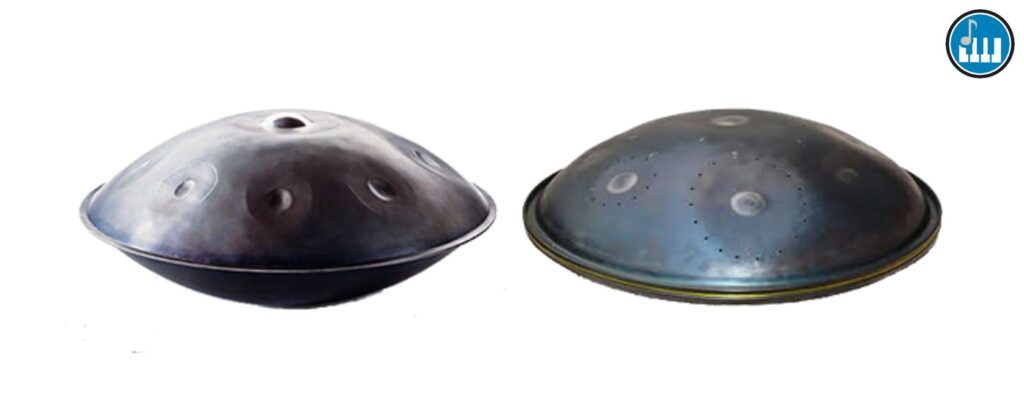
The Hang, also known as the Hang Drum or hand pan, is a very recent musical instrument, but one that was able to gain a lot of popularity. The Hang is made up of two steel half shells that have parts that you strike with your fingers to produce specific tones. Like harmonicas, each hang has a musical scale that you can play. Thus, you need a hang to play in each musical key.
The hang is a percussive but also harmonic musical instrument. In the video below he shows the incredible tones and melodies that you can play with this musical instrument.
The hang is played by placing it on your lap and playing it to produce the tones. Unfortunately these Hang Drums are very expensive.
Final Thought on the Different Types of Drums
The different types of drums have a great history, since they are one of the first musical instruments. Some of those named are very recent, such as the acoustic drum that has only existed for about 100 years, or the hang that was invented in the year 2000. If you are a drummer or percussionist interested in expanding your range of tones, these types of drums they will give you a rich spectrum of sounds.
Tell us in the comments section below, your experience with the different types of drums.
We recommend that you visit our selection of the best microphones for singing live.

